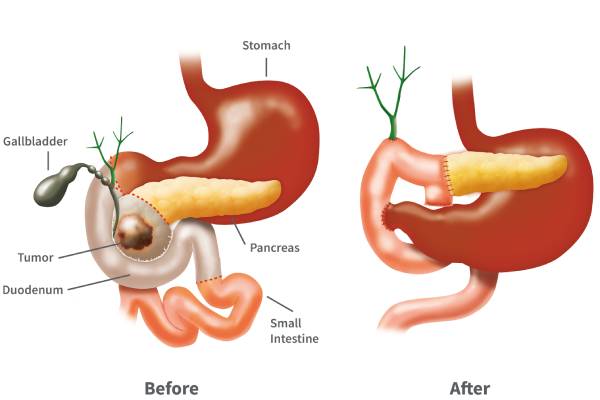Pancreatic Surgery
- Home >
- Pancreatic Surgery

What Is A Whipple Procedure ?
A Whipple procedure — also known as a pancreaticoduodenectomy — is a complex operation to remove the head of the pancreas, the first part of the small intestine (duodenum), the gallbladder and the bile duct.
The Whipple procedure is used to treat tumors and other disorders of the pancreas, intestine and bile duct. It is the most often used surgery to treat pancreatic cancer that’s confined to the head of the pancreas. After performing the Whipple procedure, your surgeon reconnects the remaining organs to allow you to digest food normally after surgery.
The Whipple procedure is a difficult and demanding operation and can have serious risks. However, this surgery is often lifesaving, particularly for people with cancer.
Best Pancreatic Surgery in Pune
Dr. Nikhil’s specialties include all aspects of pancreatic surgery including pancreatic cancer surgery, early-stage pancreatic cancer surgery, pancreatitis treatment, periampullary cancer surgery, peritonitis treatment, chronic pancreatitis treatment, and more!
Dr. Nikhil Jillawar is the finest pancreatic surgery specialist in Pune , delivering state-of-the-art expertise with compassion.
Quality care in India
Dr. Nikhil’s approach to quality care is based on patient dignity and the best possible surgical outcomes; he offers affordable rates for his services that are on par with international standards of care.
Why It’s Done?
A Whipple procedure may be a treatment option for people whose pancreas, duodenum or bile duct is affected by cancer or other disorder. The pancreas is a vital organ that lies in the upper abdomen, behind your stomach. It works closely with the liver and ducts that carry bile. The pancreas releases (secretes) enzymes that help you digest food, especially fats and protein. The pancreas also secretes hormones that help manage your blood sugar.
Your doctor may recommend you have a Whipple procedure to treat:
- Pancreatic cancer
- Pancreatic cysts
- Pancreatic tumors
- Small bowel cancer
- Trauma to the pancreas or small intestine
What Are The Signs Of Pancreatic Disease?
Pancreatitis symptoms tend to occur suddenly, whereas pancreatic cancer symptoms tend to develop gradually over weeks to months. Some symptoms of pancreatitis are:
- Occasionally, new-onset diabetes
- Abdominal pain
- Difficulty eating
- Weight loss
- Diarrhea
How You Should Prepare ?
Your surgeon will review several factors to evaluate which approach to your surgery is best in your situation. He or she will also assess your condition and ensure that you are healthy enough for a complex operation. You may require some additional medical tests and optimization of some of your health conditions before proceeding to surgery.
A Whipple procedure may be done in various ways:
Open surgery : During an open procedure, your surgeon makes an incision in your abdomen in order to access your pancreas. This is the most common approach and the most studied.
Laparoscopic surgery :During laparoscopic surgery, the surgeon makes several smaller incisions in your abdomen and inserts special instruments, including a camera that transmits video to a monitor in the operating room. The surgeon watches the monitor to guide the surgical tools in performing the Whipple procedure.
Robotic surgery :Robotic surgery is a type of minimally invasive surgery in which the surgical tools are attached to a mechanical device (robot). The surgeon sits at a console nearby and uses hand controls to direct the robot.
What Are The Risks ?
The Whipple procedure is a technically difficult operation, often involving open surgery. It carries risks both during and after surgery. These may include:
1. Bleeding at the surgical areas.
2. Infection of the incision area or inside your abdomen.
3. Delayed emptying of the stomach, which may make it difficult to eat or to keep food down temporarily.
4. Leakage from the pancreas or bile duct connection.
5. Diabetes, temporary or permanent.
